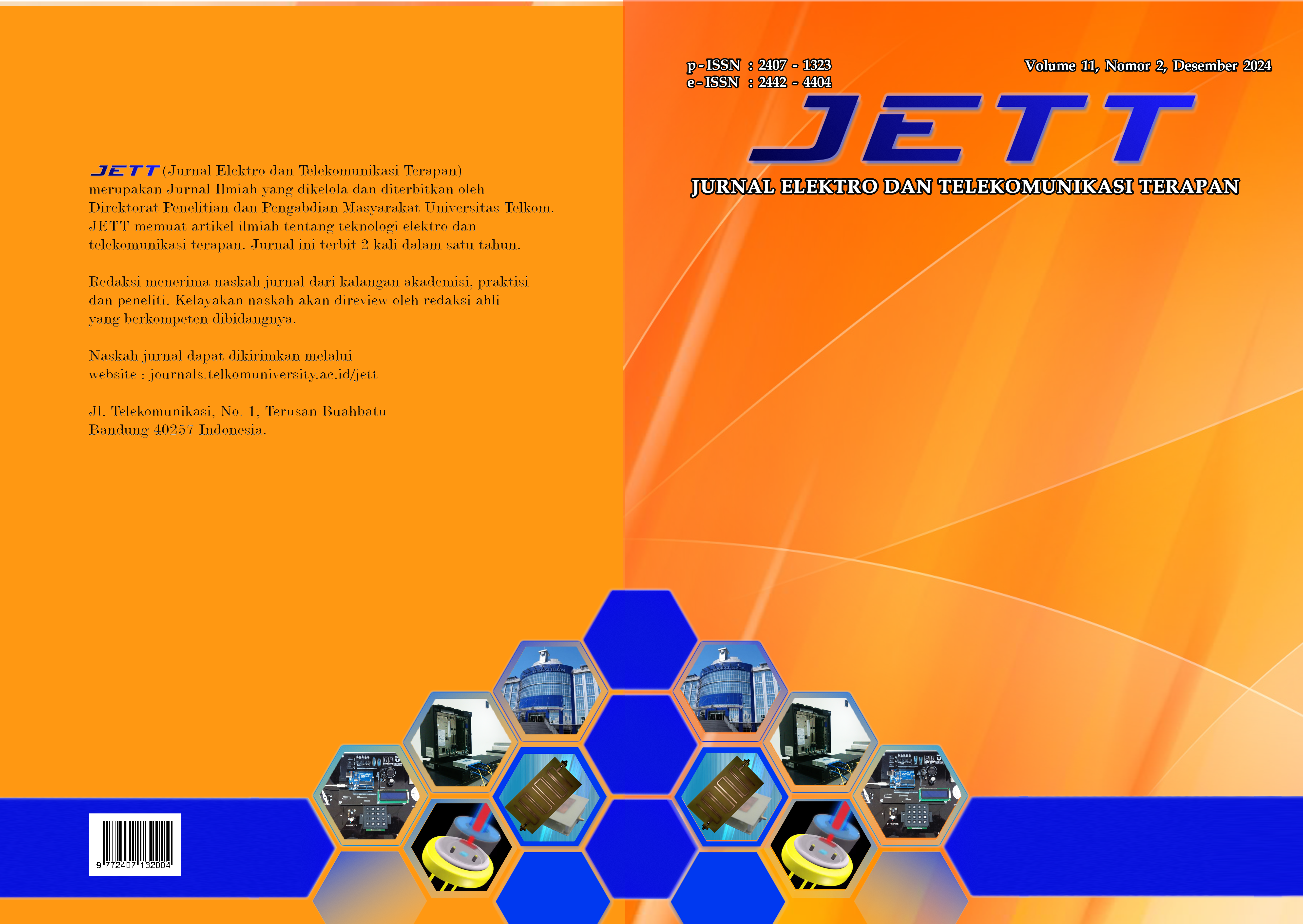| Issue | Vol. 7 No. 2 (2020) |
| Release | 03 March 2021 |
| Section | ELECTRONICS |
Electricity has become a basic need of society today. Alternative energy sources are one of the ways to help people in providing electrical energy, therefore an internet of things-based electric stove technology (KOLISS-IoT) is needed. technology. A monitoring tool is needed so that it is known how much the performance of the KOLISS-IoT technology in producing electrical energy. The tool designed to monitor this requires a voltage and current sensor, and Arduino. Current sensor uses INA219 sensor which functions to detect how much voltage and power current is generated by KOLISS-IoT. Arduino and ESP8266 modules are needed to process data and send data using IoT technology. The results can be displayed on a 16x2 I2C lcd and webpage using the ESP8266 module. The test results obtained through measurements using the sensor voltage, current, and power by the INA219 sensor are at an average of 2.65V for the calculation of the voltage, 0.031A for the calculation of the current and 0.0785W for the calculation of power. The maximum values ??of voltage, current and power in the test are 2.85 V, 0.068A, and 0.194W.
Keywords: monitoring, INA219, current sensor, IoT, arduino
R. E. Caraka, “Simulasi Kalkulator Energi Baru Terbarukan (Ebt) Guna Memenuhi Ketahanan Energi Di Indonesia,” Stat. J. Theor. Stat. Its Appl., vol. 16, no. 2, pp. 77–88, 2017, doi: 10.29313/jstat.v16i2.1956.
W. He, G. Zhang, X. Zhang, J. Ji, G. Li, and X. Zhao, “Recent development and application of thermoelectric generator and cooler,” Appl. Energy, vol. 143, pp. 1–25, 2015, doi: 10.1016/j.apenergy.2014.12.075.
G. J. Snyder, “Small thermoelectric generators,” Electrochem. Soc. Interface, vol. 17, no. 3, pp. 54–56, 2008.
K. K. Patel, S. M. Patel, and P. G. Scholar, “Internet of Things-IOT: Definition, Characteristics, Architecture, Enabling Technologies, Application & Future Challenges,” Int. J. Eng. Sci. Comput., vol. 6, no. 5, pp. 1–10, 2016, doi: 10.4010/2016.1482.
J. Fraden and J. G. King, Handbook of Modern Sensors: Physics, Designs, and Applications, 2nd ed., vol. 66, no. 4. 1998.
H. Habiburosid, W. Indrasari, and R. Fahdiran, “Karakterisasi Panel Surya Hybrid Berbasis Sensor Ina219,” vol. VIII, pp. SNF2019-PA-173–178, 2019, doi: 10.21009/03.snf2019.02.pa.25.
F. Triyuandika, I. K. Ningrum, W. Djatmiko, F. Teknik, and U. N. Jakarta, “Prototipe sistem energi terbarukan rumah tangga,” J. Autocracy, vol. 5, pp. 114–127, 2018, doi: 10.21009/autocracy.05.2.7.
Tukadi, W. Widodo, M. Ruswiensari, and A. Qomar, “Monitoring Pemakaian Daya Listrik Secara Realtime Berbasis Internet of Things,” Semin. Nas. Sains dan Teknol. Terap. VII 2019, pp. 581–586, 2018.
D. A. C. Bento, “IoT: NodeMCU 12e X Arduino Uno, Results of an experimental and comparative survey,” Int. J. Adv. Res. Comput. Sci. Manag. Stud., vol. 6, no. 1, pp. 46–56, 2018, [Online]. Available: http://www.ijarcsms.com/docs/paper/volume6/issue1/V6I1-0022.pdf.
Copyright Notice
An author who publishes in the Jurnal Elektro dan Telekomunikasi Terapan agrees to the following terms:
- Author retains the copyright and grants the journal the right of first publication of the work simultaneously licensed under the Creative Commons Attribution-NonCommercial 4.0 International License that allows others to share the work with an acknowledgement of the work's authorship and initial publication in this journal
- Author is able to enter into separate, additional contractual arrangements for the non-exclusive distribution of the journal's published version of the work (e.g., post it to an institutional repository or publish it in a book) with the acknowledgement of its initial publication in this journal.
- Author is permitted and encouraged to post his/her work online (e.g., in institutional repositories or on their website) prior to and during the submission process, as it can lead to productive exchanges, as well as earlier and greater citation of the published work (See The Effect of Open Access).
Read more about the Creative Commons Attribution-NonCommercial 4.0 International License. here: http://creativecommons.org/licenses/by-nc/4.0/.
Privacy Statement
The names and email addresses entered in this journal site will be used exclusively for the stated purposes of this journal and will not be made available for any other purpose or to any other party.


